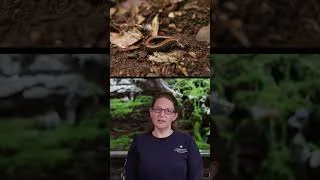
Celebrating Amphibian Week 2025: The Marvelous Lives of Frogs and Toads
As we gather to celebrate Amphibian Week 2025, it's essential to highlight the fascinating world of amphibians and the critical roles they play in our ecosystems. From vibrant colorful frogs to the unique metamorphosis of toads, each aspect of their lives offers insights into biodiversity and conservation.
One of the striking features of amphibians, particularly the Vietnamese mossy frog, is their incredible camouflage. When viewed from a distance, they become nearly indistinguishable from clumps of moss, allowing them to evade predators. When threatened, they have a remarkable defense mechanism — curling up and dropping into water to escape danger. Such adaptations underscore the evolutionary ingenuity of these species.
In contrast to this camouflage, salamanders captivate us with their astonishing ability to regenerate lost body parts. This regenerative capability can provide valuable insights into human medicine, particularly in the treatment of spinal injuries or Alzheimer's disease. Scientists are keen to study the macrophages in salamanders that facilitate this remarkable healing process, with the hope of unlocking secrets to human recovery.
Many may wonder how to distinguish between reptiles and amphibians. A key indicator lies in their skin texture: while reptiles have rough, scaly skin, amphibians possess moist and slimy skin crucial for respiration. This unique feature showcases how amphibians like frogs and salamanders adapt to their environments, breathing not just with lungs but also through their skin.
As we learn about amphibians, we must also recognize the threats they face. For instance, many brightly colored poisonous frogs, which signal their toxicity to predators, derive these dangerous compounds from their diet. The intricate relationship between food sources and toxin production is a fascinating aspect of their biology, emphasizing the importance of biodiversity in sustaining healthy amphibian populations.
The larger ecological role of amphibians cannot be overstated; they are fundamental to controlling insect populations and serve as food for larger animals in the food chain. Their decline can lead to significant imbalances in our ecosystems, which in turn affects the forests and, ultimately, all life on Earth.
Interestingly, vernal pools, which are shallow temporary ponds formed during seasonal rains, become breeding grounds for numerous amphibian species, including frogs and salamanders. The presence of these pools is crucial for their life cycles, emphasizing the importance of wetland conservation.
However, the Panamanian golden frog, an emblem of conservation efforts, is now extinct in the wild. The deadly chytrid fungus has devastated amphibian populations worldwide, and ongoing research by scientists aims to combat this tragic crisis. Organizations like the Smithsonian National Zoo and Conservation Biology Institute have joined global partners in a relentless quest to save amphibians from dying out.
In conclusion, Amphibian Week invites us to appreciate the marvels of frogs and toads while promoting their conservation. As we delve deeper into their lives, we confront pressing questions about our responsibility to protect these remarkable creatures and their habitats. What can you do to help amphibians thrive in your community? We encourage you to share your thoughts and ideas in the comments below!